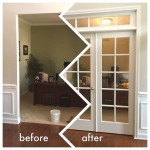Modern Style Interior Design
Modern interior design, a prominent style in the 20th century, has had a lasting influence on contemporary aesthetics. It emerged as a reaction against the ornate and cluttered designs of the Victorian era, emphasizing simplicity, functionality, and clean lines. Modern design often prioritizes open spaces, natural light, and a focus on the inherent beauty of materials. It has evolved over time, incorporating new materials and technologies, but its core principles of minimalism and functionality remain consistent.
Key Elements of Modern Style
Modern interior design is characterized by a distinct set of elements that distinguish it from other styles. These elements contribute to the minimalist, clean, and functional aesthetic that define modern design.
1. Simplicity and Minimalism
Modern design embraces simplicity and minimalism. It avoids unnecessary ornamentation and clutter, focusing on functionality and the inherent beauty of the materials used. This principle is evident in the use of clean lines, geometric shapes, and a limited color palette. Excess furniture pieces are avoided, and each element in the space serves a purpose. The emphasis is on creating a sense of spaciousness and tranquility, prioritizing functionality over decoration.
2. Open Floor Plans
Modern design favors open floor plans that create a sense of flow and connection between different areas. Walls are often minimized or completely removed, allowing light to penetrate deeper into the space and creating a sense of openness and spaciousness. This layout encourages a sense of connection between the living, dining, and kitchen areas, fostering a sense of community and shared experience.
3. Natural Light and Materials
Modern design emphasizes the importance of natural light. Large windows and skylights are incorporated to maximize the use of daylight, creating a bright and airy atmosphere. Furthermore, the use of natural materials like wood, stone, and leather adds a sense of warmth and authenticity to the space. These materials are often left in their raw state or minimally treated to showcase their inherent beauty and texture.
Evolution of Modern Design
Modern design has undergone significant evolution since its inception in the early 20th century. While the core principles of simplicity, functionality, and clean lines remain constant, new materials, technologies, and cultural influences have shaped the style over time. These developments have resulted in sub-styles within modern design, each with its own distinctive characteristics. Some notable sub-styles include:
1. Mid-Century Modern
Mid-century modern, popular in the 1950s and 1960s, embraced organic shapes, vibrant colors, and innovative materials like molded plastic and plywood. This style emphasized comfort and functionality, with iconic pieces like the Eames Lounge Chair and the Noguchi Coffee Table. It reflected the optimism and technological advancements of the post-war era.
2. Contemporary Modern
Contemporary modern, reflecting the present era, incorporates contemporary trends and materials while maintaining the core principles of modern design. It often features sleek lines, bold shapes, and a wider range of materials including metal, glass, and sustainable choices. Contemporary modern embraces technological integration and smart home features, reflecting the increasing influence of technology in our lives.
3. Scandinavian Modern
Scandinavian modern, originating in the Nordic countries, emphasizes functionality, natural light, and a minimalist aesthetic. It features a muted color palette, natural materials like wood and leather, and a focus on simplicity and functionality. This style prioritizes comfort, warmth, and a sense of hygge, a Danish concept that emphasizes coziness and well-being.
Modern Design Principles in Contemporary Interiors
Modern design principles have a profound impact on contemporary interiors. The emphasis on functionality, simplicity, and natural light remains relevant in contemporary design, even as new trends and technologies emerge. Modern design principles continue to inspire minimalist aesthetics, open floor plans, and the use of natural materials, contributing to a sense of calm, spaciousness, and well-being in contemporary homes.
Modern design, though rooted in the past, continues to evolve, adapting to new materials, technologies, and cultural influences. Its core principles of simplicity, functionality, and clean lines continue to resonate, shaping the way we create and experience our living spaces. Whether it be a minimalist Scandinavian apartment or a sleek contemporary loft, modern design offers a timeless aesthetic that emphasizes functionality, comfort, and the beauty of simplicity.

Interior Design Wikipedia

Danish Modern Wikipedia

Scandinavian Design Wikipedia

Modern Architecture Wikipedia

Interior Architecture Wikipedia

Modern Architecture Wikipedia

Interior Design Simple English Wikipedia The Free Encyclopedia

Contemporary Architecture Wikipedia

Memphis Group Wikipedia

Kelly Wearstler Wikipedia
Related Posts








